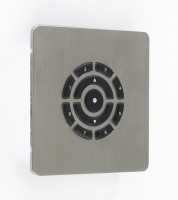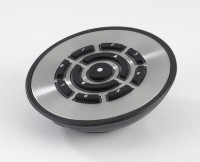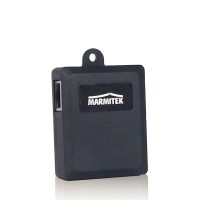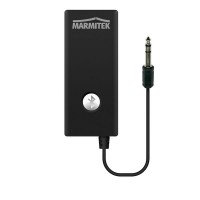 Smart Devices will Change our World and Transform Home Automation
Smart Devices will Change our World and Transform Home Automation
Did you know that the phrase, “The Internet of Things” was dreamt up by a Brummie? I guess not many people do…or even fewer, care. But you should do because The Internet of Things, or IoT or Thingternet is the Next Big Thing.
The Brummie in question is Kevin Ashton, a 45-year-old technology pioneer who cofounded the Auto-ID Center at the Massachusetts Institute of Technology (MIT), which, in turn, created a global standard system for Radio Frequency Identification (RFID).
Invisible
 We all come across RFID in our lives but for the most part it’s invisible. But if you have a pet that’s been micro-chipped, then it has an RFID device embedded in its body. You come across RFID tags in the supermarket – those stickers with a silver foil maze printed on them that appear on the packaging of higher priced items; if you’ve used an Oyster card in London or one of the new contactless debit cards, those use RFID technology. And it’s used throughout industry for tracking components down a production line or through a supply chain, for identifying and locating staff on oil rigs, for
We all come across RFID in our lives but for the most part it’s invisible. But if you have a pet that’s been micro-chipped, then it has an RFID device embedded in its body. You come across RFID tags in the supermarket – those stickers with a silver foil maze printed on them that appear on the packaging of higher priced items; if you’ve used an Oyster card in London or one of the new contactless debit cards, those use RFID technology. And it’s used throughout industry for tracking components down a production line or through a supply chain, for identifying and locating staff on oil rigs, for  smart meters and toll barriers…the list is endless.
smart meters and toll barriers…the list is endless.
But, what is an RFID device and how does it work? According to Wikipedia it is “the wireless, non-contact use of radio-frequency electromagnetic fields to transfer data, for the purposes of automatically identifying and tracking tags attached to objects.”
Identification data
 An RFID tag consists of a microchip and a coiled antenna (that’s the silver “maze” bit you see on packaging). Tags can either be active or passive. The former are powered by a battery and periodically transmit their identification data. Passive tags rely on the presence of the magnetic field generated by a tag reader to power their circuits so they can transmit their data. Some passive tags also have a battery which is switched on by the presence of a reader so that the tag can do its stuff.
An RFID tag consists of a microchip and a coiled antenna (that’s the silver “maze” bit you see on packaging). Tags can either be active or passive. The former are powered by a battery and periodically transmit their identification data. Passive tags rely on the presence of the magnetic field generated by a tag reader to power their circuits so they can transmit their data. Some passive tags also have a battery which is switched on by the presence of a reader so that the tag can do its stuff.
Like CDs and DVDs, tags can be either read-only, volatile read/write, or write once/read many. This means that data can be modified or added at different stages – this is typically used in production processes or in stock control. They can be close range but also work from up to 15m away.
They are not always dumb and there are lots of examples where the smart variety is encroaching on everyday life. Like the fridge that monitors your larder and emails reminders to you when stocks are getting low; or staplers that staple documents with an RFID staple that can tell your PC to open the right file when it gets close; smart poster sites that target ads at individuals as they pass and golf balls that let the golfer know how far they’ve been hit.
You can now get RFID “powder” – tiny tags measuring just 0.05mm x 0.05mm each with the ability to store 38-digit ID numbers.
So where is this taking us? And what has it got to do with The Internet of Things or even home automation?
Changing the world
 Well, our mate Kevin (the Brummie we mentioned earlier) reckoned that the proliferation of RFIDs – both dumb and smart, will transform our world over the coming decades. He said that, currently, the internet was almost wholly dependent on human beings for information and that nearly all the data available on the net – somewhere over 1.5 zetabytes today – had been captured by human beings typing, pressing a record button, taking a digital picture or scanning a bar code. But, he said, “If we had computers that knew everything there was to know about things—using data they gathered without any help from us—we would be able to track and count everything, and greatly reduce waste, loss and cost. We would know when things needed replacing, repairing or recalling, and whether they were fresh or past their best. The Internet of Things has the potential to change the world, just as the Internet did. Maybe even more so.”
Well, our mate Kevin (the Brummie we mentioned earlier) reckoned that the proliferation of RFIDs – both dumb and smart, will transform our world over the coming decades. He said that, currently, the internet was almost wholly dependent on human beings for information and that nearly all the data available on the net – somewhere over 1.5 zetabytes today – had been captured by human beings typing, pressing a record button, taking a digital picture or scanning a bar code. But, he said, “If we had computers that knew everything there was to know about things—using data they gathered without any help from us—we would be able to track and count everything, and greatly reduce waste, loss and cost. We would know when things needed replacing, repairing or recalling, and whether they were fresh or past their best. The Internet of Things has the potential to change the world, just as the Internet did. Maybe even more so.”
And according to those boffins at CERN, who seem to know pretty much everything about everything, ‘things’ are expected to become active participants in business, information and social processes, where they will be able to interact and communicate among themselves and with the environment by exchanging data and information ‘sensed’ about the environment, while reacting autonomously to the ‘real/physical world’ events and influencing it by running processes that trigger actions and create services with or without direct human intervention. Phew!
That could make home automation quite exciting!